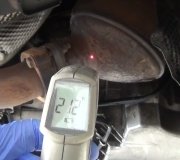Hi axis,
7 out of 10 Honda engines that I have replaced or overhauled are due to failure of the oiling system, the other 3 are due to overheating.
This problem affects all makes and not Honda alone, Toyota have a sludging problem with a judgement against them. This is most likely aggravated by use of oil tretment.
Just had a Toyota Camry with 80 k on the meter with oil pressure light showing when engine is running. Used some engine flush but only managed to get the light off for a few seconds. Camshaft were running dry. Removed the oil sump and there was a layer of sludge at bottom. Oil strainer was 80 % clogged. Cleaned the strainer and retested, light immediately went off. Any longer and the engine would be history.
When oil treatments are used, they would form a layer on any surface that oil splashes onto. Moving areas would be scraped off but those areas that do not have any friction or movement would have sludge buildup as the supposedly protective layer is sticky. Over time this buildup would increase in thickness.
Regular oil change would prolong the process of buildup but if the oil change interval is far in between and with sporadic driving, it is is going to build up rather fast.
When engine is started regularly, problem might not occur but when it sits without moving for prolonged periods, the caking of sludges dries up and the next time the engine is started, the dried layer flakes off when oil splashes onto them.
This dried up sludge then becomes sticky semi-solids which would clog up the oil strainer as the strainer holes were already partially clogged by now.
Why can't you attain top speed without oil treatment? Only reason is if the engine condition is bad. For a new engine, with ot without, I don't see any difference, unless you are using low quality oils.
Saturday, August 8th, 2020 AT 11:29 AM
(Merged)



